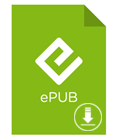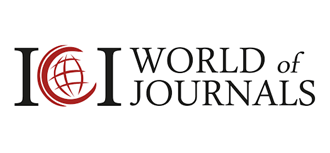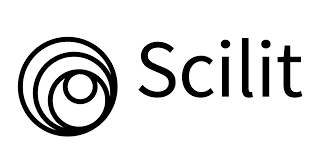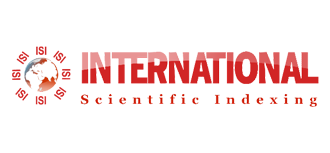Simple Summary
The awareness that much attention from research in the field of animal nutrition is directed to the identification of alternative protein sources, the need to find solutions to the growing demands of the circular economy and the idea of providing data suitable for implementing the meta-analytic calculation basis by artificial intelligence, have led the author to analyze the chemical composition of banana peels, an industrial and domestic waste. The chemical composition is such as to consider possible use in the zootechnical field, especially for the protein component whose amino acid content does not show absences in terms of essential components. It is desirable that the content of other chemical compounds, such as vitamins, minerals and any antinutritional factors, is explored with further research and that through “in vivo” tests it is possible to better define strengths and critical points for the different livestock species.
Abstract
In the context of the search for alternative protein sources, especially in the field of animal nutrition, several studies have been conducted on the use of banana peels, highlighting their chemical-bromatological characteristics, the multiple versatility of use and the correspondence to the request for compliance with the principles of the circular economy to be applied to the most varied production sectors. With the aim of providing further data to add to what is currently provided by the specific literature for the implementation of the meta-analytic calculation base, in this note, the “raw” chemical composition of banana peels is analyzed with the aim of providing further data and confirmations to add to what the specific literature provides us to date. The results obtained indicate a moisture content of 10%, protein of 6%, fat of 3.5%, carbohydrates of 54%, ash of 9%, fiber of 13% (on dry matter basis). The amino acid analysis highlights the presence of all essential amino acids with a prevalence of lysine (7.28%), isoleucine (6.90%), leucine (5.94%) and threonine (5.87%). The data obtained are on average similar to what has already been found in literature. In light of the results, banana peels show a protein content that is not high but of good quality in terms of essential amino acids; the carbohydrate content is high and the amount of crude fiber is useful for the nutrition of monogastric animals with a dietary function.
Keywords: Banana peels; Chemical composition; Protein and aminoacids; Circular economy, Meta-analysis
Introduction
In the field of human nutrition and livestock, the need to address the lack of protein ingredients linked to both territoriality and growing demand, pushes research to focus attention on alternative protein sources, both vegetal and animal. In fact, much research has been devoted to understanding the chemical-bromatological characteristics of agro-industrial by-products and food waste. Furthermore, for many years now, there has been an increasing need to organize production processes in compliance with the principles of the circular economy, attentive to the reduction of waste of natural resources and consisting of sharing, reusing, repairing and recycling of waste materials and products.
Banana peels (Musa spp) deserve the attention of researchers because, given their chemical-bromatological characteristics, they are well suited to be used in various ways in the human and livestock fields and to satisfy the statements of the circular economy [1,2]. The production of banana peels by the food industry is considerable, as is the related disposal of waste material, which has become a cause for concern. However, recent studies have shown that banana peel is a rich food source of biologically active compounds that can be transformed into valuable products [1-3].
It is difficult to know exactly how much bananas are produced in the world, since they are grown in about 150 different countries. According to 2012 data, approximately 106,710,000 tons of bananas were harvested [4], equal to 18.2% of the total fruit production worldwide [5]. India is the world’s largest producer with 17.3% of total production [6]. The production of bananas produced in the European Union and marketed in the respective production area, from January to December 2023, was 53,931 tons for Spain, 6,613 tons for France and 1,035 tons for Greece. The total production forecast for 2023 was 661,487 tons [7]. The banana plant is used primarily for its fruit, which are widely consumed and used in various food processing applications, including the production of jam, chips, dried pulp, and alcoholic beverages such as beer or wine [8].
Both this widespread use of bananas in food industries and household consumption lead to a significant amount of waste in the form of banana peels, leaves, pseudostems and stems. Banana peels alone constitute 30-40% [6,9,10] of a fresh banana fruit, which poses a major challenge for safe solid waste disposal [9]. To facilitate its disposal, banana peel can be used for various industrial productions including the production of biofuels, biosorbents, pulp and paper, cosmetics, energy-related activities, organic fertilizers, environmental cleaning and biotechnologyrelated processes [11].
About 30-40% of the total banana production is discarded because it does not meet quality standards and is potentially available for livestock feed [12]. Banana peel is a valuable nutritional source for animal feed; banana peels are known to contain a significant amount of proteins, lipids, carbohydrates, fibers and a number of essential minerals such as potassium, sodium, calcium, iron and manganese [13]. They are rich in polyunsaturated fatty acids such as linoleic acid (Omega-6) and α-linolenic acid (Omega-3), which represent over 40% of total fatty acids [14,15].
The essential amino acids leucine and lysine are abundant in banana peels. Dietary consumption of leucine appears to have clear long-term health benefits, including a reduction in dietinduced weight gain, hyperglycemia, and hypercholesterolemia [16]. This characteristic appears to confer to particular lysine conjugates an anticancerogenic power [17].
Heavy metals and antinutrients, such as tannins, are present in concentrations that fall within acceptable ranges. Tannins are the main antinutritional factors in bananas and are mainly contained in the peels. Ripening causes these tannins to migrate into the pulp or to be degraded by polyphenol oxidase and peroxidase [18]. Through microbial fermentation it is possible to improve the nutritional value of banana waste with an increase in protein and sugar content [19]. The nutritional value of banana peels fed to ruminants is estimated to be similar to that of cassava or citrus peels [20,18].
Wadhwa et al. (2015) suggest can replace up to 100% of corn with banana peels for small growing ruminants and in grass-fed Zebus, addition of 15-30% banana peels in the diet increased weight gain significantly without causing health problems or affecting palatability [6]. Dairy cows fed up to 21 kg of fresh ripe banana peels had increased milk production [21].
Replacing sorghum silage with banana peel up to 60% in the diet of lactating cows reduces the time spent feeding and improves the efficiency of feeding and dry matter rumination, maintaining the milk production of the cows [22]. In goats, dried peels of mature banana can completely replace corn kernels without adverse effects on animal growth and performance, and are an economical source of carbohydrates [23].
Like other banana products, banana peels can be an important staple food for pigs owned by smallholders in banana producing areas [24]. Dried ripe banana peels have been fed to growing pigs up to 20% of the dry matter (DM) diet without depressing growth, but higher inclusion rates caused poor growth [6,25]. Maximum inclusion rates of 7.5% and 10% dried banana peels have been suggested for broiler diets. In one experiment, dried banana peels as a replacement for corn kernels led to a significant decrease in weekly weight gain when included at more than 7.5% in the diet [26]. In another experiment, live weight gain and feed conversion efficiency were significantly higher in chickens fed up to 10% banana peel meal in the diet. Feed intake increased linearly with increasing peel levels up to 10%, after which growth decreased [27]. Wadhwa et al. (2015) suggest for broilers a replacement of 15% of the corn in the diet with [6].
According to Blandon et al. (2015) [28] the inclusion of banana peels in the diet of broiler chickens did not cause significant changes in performance but the increased replacement level of banana peels resulted in a reduction in the feed costs of the diets.
Dried banana peels could be replaced up to 18% as an alternative feed for laying hens, without detrimental effects on performance and egg quality characteristics [29].
Inclusion of 25% banana peel powder in corn-based feed ration ensures optimum weight gain and egg production in chickens [30].
Dried banana peels can be included at 20-30% DM in rabbit diets, particularly as a partial or total replacement for corn kernels [6,31]. Maturation may slightly improve their nutritional value [32]. Sun-dried mature banana peels could replace up to 75% of corn (27% DM diet) or 100% (36% DM diet) in weaned rabbit diets with positive economic returns, although total replacement depressed performance (digestibility, weight gain, feed conversion ratio, carcass quality) [31,33].
Inclusion rates above 30% may have detrimental effects on final weight gain, daily weight gain and feed conversion efficiency [32].
Aim of this work is to provide data on the simple chemical composition of banana peels useful for meta-analytical processing that can provide answers to the demand for alternative nutritional sources in the field of animal nutrition.
Materials and methods
Banana peels were analyzed in a suitably equipped analytical laboratory.
The chemical composition of the samples was determined
using the standard analytical methods of the Association of Official
Analytical Chemists [34]. The moisture content of the samples
was determined by the method of drying in an oven at 105 °C to a
constant weight. The crude protein of the samples was determined
using the micro-Kjeldahl method. Crude lipids were determined
by the Soxhlet extraction method using petroleum ether as the
extraction solvent. The ash content was determined using a muffle
furnace set at 5500 °C for 4 h to a constant weight. The crude
fiber was determined with Weende method. The carbohydrate
content was obtained by difference using the following formula:
Carbohydrate % = 100- (moisture % + protein % + ash % + fat %
+ crude fiber %).
Metabolizable energy (ME) was calculated according to the
following mathematical formula (for poultry) of Lodhi et al. [35]:
ME (kcal/kg) = 370.29 + (24.47 × % crude protein)+ (65.77 ×
% ether extract)+ (44.07 × % available carbohydrate) - (8.15 × %
crude fiber).
Amino acids were determined by the HPLC method.
Results and Discussion
Table 1 shows the results obtained from this investigation and the data available in the literature on the chemical composition of banana peels expressed as a percentage of dry matter.

The analysis of the samples showed a moisture content of 10.06%, ash of 9.05%, ether extract of 3.5%, crude protein of 6.02%, crude fiber of 13.45% and carbohydrates of 53.62%.
Results completely in line with the average values reported in the literature. In fact, the data showed an average moisture content of 10.16% (min 7.5%-max 13.49%), ash of 10.24% (min 6.7%-max 12.45%), ethereal extract of 7.67% (min 0.9%-max 23.93%), crude protein of 6.42% (min 2.3%-max 10.44%), crude fiber of 16.67% (min 10.4%-max 29.52%) and carbohydrates of 53.44 (min 32.39%-max 76.6%).
The ash content is medium high and provides useful contributions of macroelements mainly sodium, magnesium and potassium, followed by iron and manganese [13].
The crude fat content is low and may not be a good source of fat-soluble vitamins nor can it contribute significantly to the energy content of feed, but it increases shelf life and reduces the risk of rancidity.
The protein content is not particularly high but such as to make banana peels a valid substitute like other vegetable protein sources [1-3].
The fiber content is comparable to that of many other byproducts of vegetable origin used profitably both for the feeding of ruminants and non-ruminants, in which fiber is known to have a dietary function. Carbohydrates are the most present constituents in percentage and represent the main energy source.
In Table 2, the amino acid content of banana peel protein determined by this investigation was compared with that found by Tsado et al. (2021) [43]. Both the total content and that of individual amino acids are comparable to that indicated by the authors. Among all amino acids, glycine (0.15%), glutamic acid (8.95%) and aspartic acid (8.93%) were the most abundant; among the essential ones, lysine (7.28%), isoleucine (6.90%), leucine (5.94%) and threonine (5.87%) prevail. All the essential amino acids are present which, being in quantities similar to those found in egg yolk [44], give the protein a good biological value.

*Modified by author. Average Plantain/Banana data
The data confirm as stated in literature, mainly a high content of carbohydrates and crude fiber and a protein of good biological value.
Conclusion
The need to provide adequate answers to requests from the most diverse sectors by implementing the database for metaanalytic processing by artificial intelligence, to find solutions for the use of waste and by-products from various production sectors in compliance with the criteria of the circular economy and to highlight possible alternative protein sources, especially in the animal sector, has pushed the author to determine the chemical composition of banana peels, a food and agro-industrial waste that, judging from what emerges from the existing bibliography, can be used for multiple purposes.
The data obtained concerned the crude chemical composition and the amino acid composition of the protein and confirmed what was already present in previous scientific works, namely a high presence of carbohydrates and dietary fiber, a fair content of protein of good nutritional value, a high content of ash and a low content of crude fats which confirm its possible use in the nutritional field in the form of feed for both monogastrics and ruminants as a replacement for other by-products of plant origin.
There is no doubt that it would be desirable to conduct further investigations to investigate other aspects such as, among many others, the fatty acid composition, the presence of antinutritional factors and bioactive compounds, the mineral and vitamin content, the level of inclusion in diets for polygastrics and monogastrics through “in vivo” tests.
References
- Padam BS, Seng Tin H, Chye FY, Abdullah MI (2012) Banana by-products: an under-utilized renewable food biomass with great potential. J Food Sci Technol 51(12): 3527-3545.
- Hikal WM, Said-Al Ahl HAH, Bratovcic A, Tkachenko KG, Sharifi-Rad J, et al. (2022) Banana Peels: A Waste Treasure for Human Being. Evid Based Complement Alternat Med pp: 7616452.
- Bishnoi S, Sharma S, Agrawal H (2023) Exploration of the Potential Application of Banana Peel for Its Effective Valorization: A Review. Indian J Microbiol 63(4): 398-409.
- FAO (2012/2013/2015) FAOSTAT statistical database. Rome.
- Hailu M, Seyoum WT, Belew D (2014) Effect of packaging materials on shelf life and quality of banana cultivars (Musa spp.). J Food Sci Technol 51: 2947-2963.
- Wadhwa M, Bakshi MPS, Makkar HPS (2015) Waste to worth: fruit wastes and by-products as animal feedy. CAB Reviews.
- Agriculture and rural development. Source: agriculture.ec.europa.eu.
- Aurore G, Parfait B, Fahrasmane L (2009) Bananas, raw materials for making processed food products. Trends Food Sci Technol 20: 78-91.
- Sial TA, Khan MN, Lan Z, Kumbhar F, Ying Z, et al. (2019) Contrasting effects of banana peels waste and its biochar on greenhouse gas emissions and soil biochemical properties. Process Saf Environ Prot 122: 366-377.
- Ajila CM, Brar SK, Verma M, Tyagi RD, Godbout S, et al. (2012) Bioprocessing of agro-byproducts to animal feed. Crit Rev Biotechnol 32: 382-400.
- Prashanthi D, Chaitanya M (2020) A review on multiple uses of banana peel. Int J Sci Dev Res 5: 120-122.
- Babatunde GM (1992) Availability of banana and plantain products for animal feeding. In: Machin D, Nyvold S, editors. Roots, Tubers, Plantains and Bananas in Animal Feeding. FAO Animal Production and Health Paper pp: 289.
- Ahnwange BA (2008) Chemical composition of Musa sapientum (banana) peels. Electronic Journal of Environmental Agricultural and Food Chemistry 8: 437-442.
- Khawas P, Deka SC (2016) Comparative nutritional, functional, morphological, and diffractogram study on culinary banana (Musa ABB) peel at various stages of development. International Journal of Food Properties 19(12): 2832-2853.
- Emaga TH, Andrianaivo RH, Wathelet B, Tchango JT, Paquot M (2007) Effects of the stage of maturation and varieties on the chemical composition of banana and plantain peels. Food Chemistry 103(2): 590-600.
- Zhang Y, Guo K, LeBlanc RE, Loh D, Schwartz GJ (2007) Increasing dietary leucine intake reduces diet-induced obesity and improves glucose and cholesterol metabolism in mice via multi mechanisms. Diabetes 56(6):1647-1654.
- Roomi MW, Ivanov V, Kalinovsky T, Niedzwiecki A, Rath M (2006) Antitumor effect of ascorbic acid, lysine, proline, arginine, and green tea extract on bladder cancer cell line T-24. Int J Urol 13(4): 415-419.
- Emaga TH, Bindelle J, Agneesens R, Buldgen A, Wathelet B (2011) Ripening influences banana and plantain peels composition and energy content. Trop Anim Health Prod 43(1): 171-177.
- Hong KJ, Lee CH, Kim SW (2004) Aspergillus oryzae GB-107 fermentation improves nutritional quality of food soybean and feed soybean meals. J Med Food 7(4): 430-435.
- Onwuka CFI, Adetiloye PO, Afolami CA (1997) Use of household wastes and crop residues in small ruminant feeding in Nigeria. Small Rumin Res 24: 233-237.
- Dormond H, Boschini C, Rojas BA (1998) Effect of two levels of ripe banana peel on milk production by dairy cattle. Agronomia Costarricense 22(1): 43-49.
- Pimentel PRS, Rocha Júnior VR, De Melo MTP, Ramos JCP, Cardoso LG (2016) Feeding behavior of f1 Holstein x zebu lactating cows fed increasing levels of banana peel. Acta Sci Anim Sci 38(4): 431-437.
- Aregheore EM (1998) A note on the nutritive value of dry ripe plantain peels as a replacement of maize for goats. J.Anim. Alimenta Sci 7(1): 55-62.
- Buragohain R, Kalita G, Sarma K (2010) Nutritional significance of banana as swine feed. Indian Vet J 87(3): 301-302.
- Rios A, Abernathy RE, Nicholas HJ (1975) Banana peels as a potential source of animal food and other useful products. Nutr Rep Int 11 (5): 399-408.
- Tewe OO (1983) Replacing maize with plantain peels in diets for broilers. Nutr Rep Int 28(1): 23-29.
- Sabutan MGI (1996) Banana peels help broiler chickens grow. Misset Mondo Pollame 12(6): 59-61.
- Blandon J, Hamady G, Abdel-Moneim M (2015) The effect of partial replacement of yellow corn by banana peels with and without enzymes on broiler’s performance and blood parameters. Journal of Animal and Poultry Science 4(1): 10-19
- Shumye M, Molla M, Awoke T, Dagnew Y (2022) Effect of banana peels as a substitute for white maize grain on laying performances and egg quality of Bovans Brown chickens. Cogent Food and Agriculture 8(1): 2116803.
- Araya HG, Gebrekristos SG, Oliver WV (2021) Effects of banana peels on chicken weight gain and egg production in the urban and peri-urban areas of Aksum City, Ethiopia. Kenya Agricultural and Livestock Research Organization.
- Fanimo AO, Odu S (1996) Effect of ripe plantain peel (Musa cv) on growth and carcass performance of growing rabbits. Pertanika J Trop Agric Sci 19(1): 89-93.
- Fanimo AO, Oduronbi TO (2006) Nutritive value of unripe and ripe plantain (Musa paradisiaca) peels for weanling rabbits. Nigerian J Anim Prod 3(1-2): 9-15.
- Ajasin FO, Omole AJ, Oluokun JA, Obi OO, Owosibo A (2006) Performance characteristics of weaned rabbits fed plantain husks instead of corn. Mondo J Zool 1(1): 30-32.
- AOAC (1995) Official Methods of Analysis. 14th Edition, Association of Official Analytical Chemists, Washington DC.
- Lodhi GN, Daulat S, Ichhponani JS (1976) Variation in nutrient content of feeding stuffs rich in protein and reassessment of the chemical method for metabolizable energy estimation for poultry. J Agric Sci 86(2): 293-303.
- Saeed MK, Zahra N, Saeed A, Syed Q, Abidi Syed HI (2024) Banana peels a contemptible source of dietary fiber and natural antioxidants. Acta Pharmaceutica Sciencia Open Access 62(1): 89-103.
- Essien JP, Akpan EJ, Essien EP (2005) Studies on mould growth and biomass production using waste banana peel. Bioresour Technol 96(13): 1451-1456.
- Romelle F, Ashwinim P, Manohar R (2016) Chemical composition of some selected fruit peels. European J Food Sci Technol 4(4): 12-21.
- Abubakar US, Yusuf KM, Safiyanu I, Abdullahi S, Saidum SR, et al. (2016) Proximate and mineral composition of corn cob, banana and plantain peels. Int J Food Sci Nut 1(6): 25-27.
- Okareh OT, Adeolu AT, Adepoju OT (2015) Proximate and mineral composition of plantain (Musa paradisiaca) wastes flour; a potential nutrients source in the formulation of animal feeds - African Journal of Food Science and Technology 6(2): 53-57.
- Wadhwa M, Bakshi MPS (2013) Utilization of fruit and vegetable wastes as livestock feed and as substrates for generation of other value-added products - Technical Editor: Harinder P.S. Makkar.
- Hossain MDE, Sultana SA, Karim MH, Ahmed MDI (2015) Vegetable peels: a promising feed resource for livestock. Online J Anim Feed Res 5(1): 33-39.
- Tsado AN, Okoli NR, Jiya AG, Gana D, Saidu B, et al. (2021) Proximate, Minerals, and Amino Acid Compositions of Banana and Plantain Peels. BIOMED Natural and Applied Science 1(01): 032-042.
- CREA-Alimenti nutrizione.






























